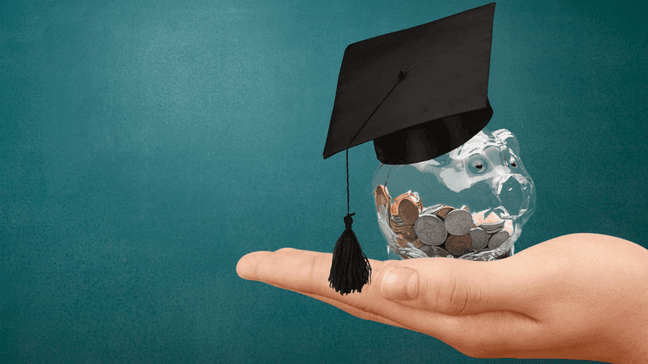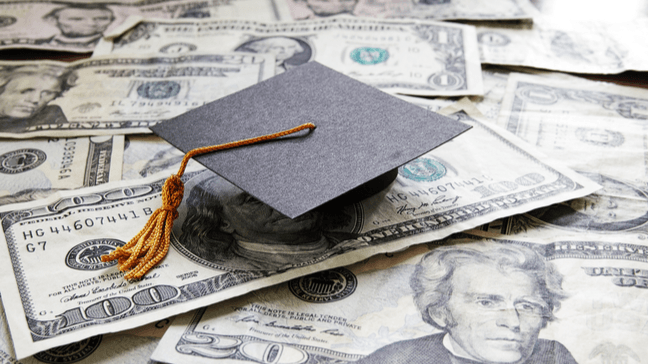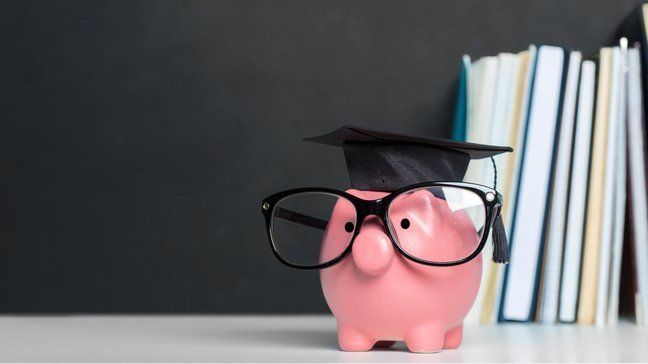
One of the very few good moments of 2022 (besides the release of “Tiger King”, obviously) was when federal student loans were place in an interest-free moratorium following the CARES Act was approved.
The original plan was for payments to restart in September of that same year, but that didn’t happen. Instead, we got lucky with several extensions (six to become exact).
Now, the White House has released an argument stating that federal education loan payments are set to resume after August 31st, 2022 – although there’s speculation that this may not be the final extension of the year.
If, like me, you have a few of these financing options beneath your belt, here’s how to prepare yourself for when payments resume.

Why you shouldn’t wait until September to take action
Dealing with student education loans isn’t exactly everyone’s concept of fun, but ignoring your education loan debt won’t do you any favors, either. Actually, that’s basically a occur, as you will finish up missing a payment.
While lenders typically wait 90 days to report late or missed payments to the credit agencies, once they do, your loan becomes delinquent. If that happens, your credit rating will require a hit, making it harder for you to access credit later on.
The worst part?
It takes up to seven years for delinquencies to disappear your credit report.
You don’t desire a tiny mistake like a missed student loan payment to haunt you for many years. That’s why it’s so important for all federal education loan borrowers to consider charge of their loans in early stages making a arrange for education loan repayment.
How to get ready for restarting payments
Coming up with the right game plan to tackle your upcoming payments might seem intimidating, but it’s actually easier than you think.
I’ve consulted Megan Walter, a policy analyst at the National Association of Student Educational funding Administrators (NASFAA), and Amy Lynn Richardson, CFP with Schwab Intelligent Portfolios, to generate a purchase of operations to help you get ready when ever repayment starts.
Make sure all your contact details is up to date
You might think it’s not that big of the deal in case your education loan servicer has the wrong telephone number or your old email address, but it’s super important that they can get hold of you as soon as possible when they have to.
Why?
Because you don’t wish to miss any important updates relating to your student loan accounts, including whether your payment amount is different or if you have a new due date.
Additionally, if you were previously signed up for automatic payments, the office of Federal Student Aid announced that servicers will need to contact you to definitely confirm whether or not you need to continue this arrangement. If they can’t reach you, auto-debit may be suspended, which might lead you to miss a payment.
How to improve your contact info
You can update your contact details at any time by logging into your StudentAid.gov account and changing the information on your profile. You may also do that by contacting your student loan servicer by phone, email, or by logging to your account together.
Get in touch with your student loan servicer ASAP
Many people dread contacting our student loan servicer, due to the fact we’re irrationally afraid that this will result in a distressing convo. But contacting your servicer is essential to developing a good repayment strategy.
Here are some of the things you should discover from your servicer to create an ideal plan:
- When payments will restart for you personally. Although payments are going to restart after August 31st, each servicer handles its payment dates differently. So, be sure to contact yours to understand exactly whenever your payments will be due.
- Your current payment amount. This will help you see whether you’re ready to start repaying your loans, or if you desire to make any changes to your budget or apply for a different repayment schedule.
- If you need to recertify your income-driven repayment schedule (if you were already enrolled, obviously). Since payments have been suspended for nearly two years, you might have missed your recertification date (aka the date by which you need to submit your evidence of income), which might cause your payments to improve.
Walter, from NASFAA, also recommends that each student loan borrower contacts their servicer as quickly as possible, “as they will probably be harder to get a your hands on once repayment starts people these days are scrambling to obtain answers.”
Recalibrate your budget
Without student education loans in the picture (for the time being), it’s entirely possible that you gradually compromised the part of your earnings which was originally designated for the loans.
So, to be able to get ready for the upcoming payments, Richardson, from Charles Schwab, says you have to take a seat and crunch some numbers, and obtain rid of any unnecessary expenses, if need be.
“Take this opportunity to understand your whole finances – not only your student loans. can’t answer questions around student loans without understanding an overall total picture of our finances, including goals, other debts, and funds flow.”
Once you've assessed your funds in general, then Richardson says it’s time to produce a budget – including the loan payments – and try to stick to it around you are able to.
“In this instance, creating a plan can lessen the stress and anxiety that comes with managing any kind of debt.”
See if your current repayment plan makes sense
If you recently out of work, are earning under before payments were suspended, got married, had kids, or experienced another life-changing event that has altered your finances, it’s time for you to find out if your present repayment plan still makes sense.
To do that, Walter recommends using StudentAid.gov’s Loan Simulator, that is 100% free.
The Loan Simulator uses your actual federal education loan balance along with your income, family size, and state of residency, among other details, that will help you pick which repayment plan most closely fits your financial needs.
Walter also states that by using this tool “might help students determine if consolidating their student education loans is a great choice according to their situation.”
What if you’re still unable to afford your instalments?
If after coming to a and every budget adjustment you can imagine, you still can’t afford your payment, listed here are three options you can explore.
Look into income-driven repayment plans
One of the greatest parts about having federal student education loans rather than private student education loans is you get access to flexible repayment options, including income-driven repayment plans.
Income-driven repayment plans are made to help make your debt more manageable by adjusting your payment per month to some number of your income.
On the downside, these plans must be recertified each year for you to retain eligibility, but the good news is your loan repayments might be as low as $0, for the way much you get.
To make an application for an income-driven repayment plan, you have to log in to your StudentAid.gov account, complete the shape, and submit copies of the two newest pay stubs or tax returns for your student loan servicer. This last part usually can be achieved online on your servicer’s website.
Consider loan consolidation
When you consolidate your loans, you’re essentially bundling them into one big loan, and (possibly) extending your loan repayment term.
The rate of interest about this “new” loan would be the weighted average from the rates of interest from the loans you’re seeking to consolidate, rounded up towards the nearest one-eighth of 1 percent, and it is fixed for that lifetime of the borrowed funds.
This longer repayment term along with the weighted average of the rates of interest is what can substantially reduce your monthly payment.
The best benefit?
You may also make an application for an income-driven repayment plan once you’ve consolidated your loans, which can further lower your payment.
However, Walter says that consolidation ought to be looked into carefully as:
“extending the payment period to 30 years, means you’ll pay more over the life of the borrowed funds.”
She also highlights that if you've any outstanding interest in your loans before consolidation, “that interest now becomes part of the principal of the loan debt, meaning your interest will be accruing on the higher balance than ever before.”
To make an application for consolidation, simply fill out the form here.
Apply for short-term student loan relief
If you’re just dealing with a rough patch, and foresee your financial situation improving within a couple of months, then calling your servicer and asking to place your loans in short-term forbearance or deferment may be the more sensible choice.
Both forbearance and deferment allow you to temporarily pause your instalments, without having to be penalized.
However, there are some drawbacks. One of them is that interest continues to accrue (aka grow and accumulate) while federal student education loans are paused. On top of that, your student loan forgiveness options can also be affected. That’s why Walter stresses credit forgiveness shouldn’t be used as long-term repayment strategies, only as “temporary stop-gaps to help keep you against defaulting.”
Summary
If you forgot all about your student loans’ existence while payments were suspended – you’re not by yourself.
The most important thing will be proactive, and to take a look at both your student debt and your current finances to generate an all natural plan which works for you before payments restart.








